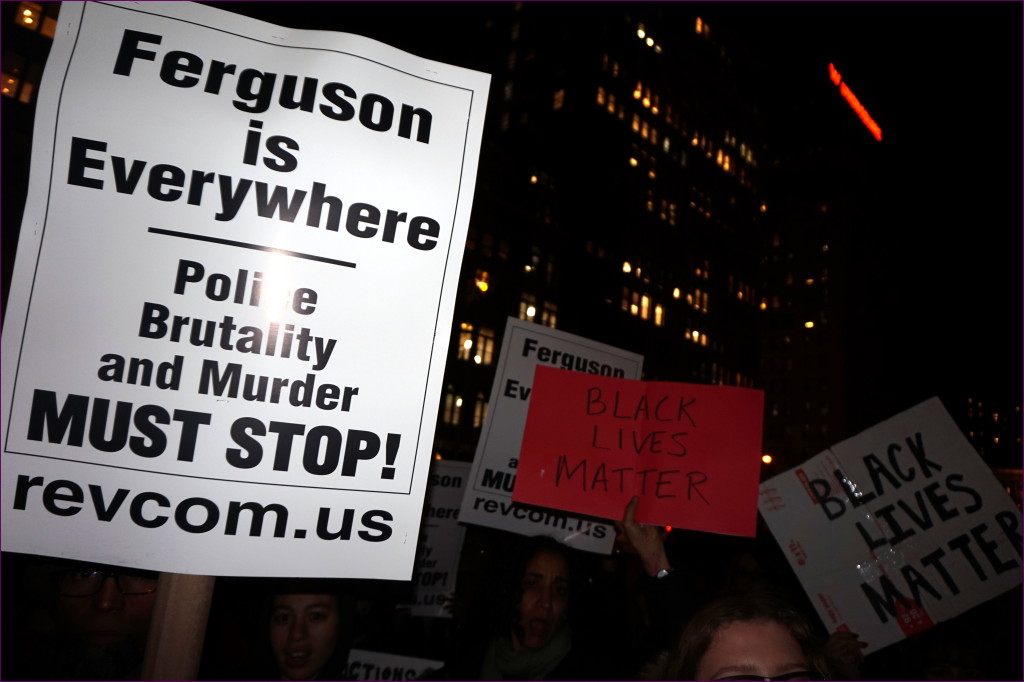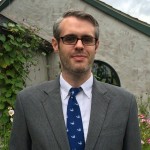
Social movement theory can teach us valuable lessons about why people organize, why violence occurs, and why it shouldn’t undermine protest. (Image: otto-yamamoto/Flickr)
If the response to grand jury decisions not to indict police in the Michael Brown and Eric Garner cases has shown us anything, it is that the feeling of powerlessness can, paradoxically, become a powerful thing. That the feeling of powerlessness, and a refusal to accept it, can in itself create unity. Unity that shuts down Times Square in New York and Interstate 110 in California, and forces a governor to call for a state of emergency even before a single person grabs a picket sign and begins to march. As Ferguson burned and rallies for justice in the Eric Garner entered their fifth day, few news outlets explored how and why protests form—with even fewer outlets questioning the underlying socioeconomic and cultural problems behind acts of looting and arson of Ferguson’s businesses. In Berkeley, CA, protesters have broken windows and thrown rocks at police officers in response to decision not to press charges against NYPD officer Daniel Pantaleo, who placed Eric Garner in a fatal chokehold this past August.
While cable news networks continue their search for narrative, a simpler and more straightforward understanding of protest violence can be found within the academic study of Social Movement Theory, the intersection of politics, protest, and psychology which teaches us how—and most importantly, why—people protest. Social Movement Theory teaches us why protests often turn violent, and why that shouldn’t undermine the phenomenon—and significance—of protest.
Gustave Le Bon, a French social psychologist and sociologist, first studied crowd psychology with his seminal work, The Crowd: A Study of the Popular Mind. Le Bon argues that crowds take on a collective psychology, functioning not as a group of individuals, but rather through a “law of mental unity” that removes the “sentiments and ideas of all the persons in the gathering” and makes them “take one and the same direction.” Following on from Le Bon’s first analyses of what later became known as Social Movement Theory, George Herbert Mead’s analysis of social philosophy and behaviorialism created a theory which, put simply, created a correlation between the mind and its environment—that the mind is a social process involving the interactions one has with various individuals and his own society, that an individual is composed of social interactions within a preexisting society. The concept of “contentious politics” as pioneered by Charles Tilly suggests that social protest hinges upon conceptions of worthiness, unity, numbers, and commitment within the group that organizes. Later social psychologists expanded upon these ideas, creating the concept of “relative deprivation,” in which people are driven to protest by perceptions of inequality, deprivation, and exclusion from society. And in the case of white police officers using lethal force on unarmed black men, few points are as salient as the concept of inequality of justice, law, and opportunity.
It’s no surprise, then, that protests in Ferguson turned ugly. So, too, have many recent social movements when race and class politics are catalysts for action. One needs to look no further than the 1991 Crown Heights riots in Brooklyn, Los Angeles’s 1992 Rodney King riots, or the Oakland riots in 2010 after the police shooting of Oscar Grant by a BART police officer. Both the Los Angeles and Oakland movements began as peaceful protests before swiftly devolving into violence. As individual thought diminishes, so does the threat of individual punishment. A law of mental unity then provides greater permission for violent acts, creating an environment where more extreme actions become tolerable—even if most protesters would argue against them individually. As Le Bon argues, crowds take on a collective psychology—removing the “sentiments and ideas of all the persons in the gathering” making them “take one and the same direction.”
Unfortunately, violent actions within social movements are hard to avoid, to the extent that social scientist Terry Eagleton typifies the phenomenon in After Theory (Basic Books, 2004) as “[belonging] not only to ancient, but also to modern tragedy, especially when interpreted as a tension between the need for radical change and its human cost.” Building upon that concept is a suggestion that violence and liberation are connected, and that violent acts and contentious politics might be the result of official exercise of power. It’s possible that Ferguson’s protests turned to arson and looting, as so many other social movements have in the past, out of frustration rather than opportunism. These acts are no aberration, nor are they unexpected. Whether or not violence serves a broader purpose of highlighting the racial injustice of having a 94 percent white police force patrol a predominantly black community, or furthers the absurdity that grand juries decided to pursue indictments in all but seven percent of federal cases in 2010 and failed to do so in these two highly contentious cases, violence becomes seen as an anomaly when viewed within the framework of Social Movement Theory.
An unavoidable yet underexamined component of the violence witnessed in Ferguson is the role civic education has on the city’s protests. When a group’s right to vote is challenged, its ability to act within bounds of normative political behavior is hampered. Social integration also has demonstrable effects on the rate of political violence within a society, as demonstrated in a 2001 study which looked at the rate of youth violence during the Palestinian Intifada. The study finds that direct involvement in the Palestinian uprising increases as “neighborhood disorganization” and “youth problem behaviors” increase as well. The late Palestinian psychiatrist Eyad El-Sarraj suggested that “chronic social toxication” as a concept of the after-effects of long-term armed conflict within a society, can “make people and children less sensitive and more ruthless, less rational and more impulsive, less conversant and more violent.” Though not speaking directly to the conditions of an urban, southern American city, the parallels remain striking: When an entire population is denied civic engagement, violence often supplants normative political behavior.
The media’s fixation on criminal behavior in protests against police brutality in the deaths of Eric Garner and Mike Brown not only undermine the need for dialogue regarding racial inequality within police conduct, it also ignores a wealth of academic research that indicates such elements of criminal activity are often unavoidable—or at the very least, are an unfortunate byproduct of the immensely complicated methods by which people organize to fight inequality. While the human mind is capable of pairing with like-minded strangers to accomplish broader sociopolitical goals, it is also incapable of thwarting the wayward actions of the few who express outrage and frustration through actions instead of words. In fact, the concept of political violence is a storied and well-researched thread within political science itself—giving credence to the idea that people do resort to violence as a method of fighting inequality, whether or not it is useful, effective, or ethically just. We too, then, might benefit from taking social protest for what it’s worth—warts and all—and view the actions of the few as an often-unavoidable byproduct of the efforts of the many.
·
 Brian O’Connor is a Blog Editor for The Brooklyn Quarterly as well as a freelance writer and editor. By day, he is a book editor focusing on politics and current affairs.
Brian O’Connor is a Blog Editor for The Brooklyn Quarterly as well as a freelance writer and editor. By day, he is a book editor focusing on politics and current affairs.
